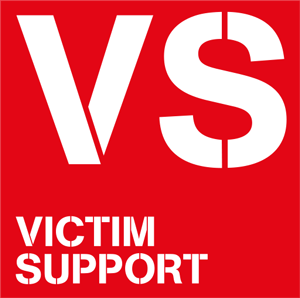Employers and Universities: Work with us?

Sexual harassment at work: What is it and what do I need to know?
You might have heard a lot in the news about sexual harassment recently. Unfortunately, sexual harassment at work is quite common. Nearly two in three young women say they have experienced it.
Sexual harassment doesn’t just mean assault. Any unwanted sexual behaviour, like a suggestive wink or an inappropriate comment about the way you’re dressed, can be sexual harassment. Sexual harassment is against the law.
We’ve written this article with the help of Meena Kumari and Shannon Little from Victim Support, a charity which provides support to victims of crime. The article is designed to empower you, not to make you feel worried about starting work. By knowing how to recognise sexual harassment at work and understanding what you can do about it, you will be better able to stop it early if it does happen to you.
'How to recognise sexual harassment at work and what to do if you think it's happening to you'
What is sexual harassment?
Sexual harassment is unwanted behaviour of a sexual nature which makes you feel distressed, intimidated or offended. It can take many forms, from inappropriate remarks to overtly sexual behaviour. Jokes about a colleague’s sex life, circulating pornography, touching, hugging or kissing – these can all be forms of sexual harassment.
Sexual harassment is a form of “unlawful discrimination” under the 2010 Equality Act – this means it’s against the law. The law says that sexual harassment is behaviour that:
- Violates your dignity.
- Creates an intimidating, hostile, degrading, humiliating or offensive setting.
At the more extreme end of the scale are things like:
- Sexual assault.
- Asking you to do sexual things in return for things you want at work.
- Excessive contact (eg by email), particularly of a sexual nature.
- Displaying images or photos of a sexual nature.
But it might not always be so obvious. People may do things that you’re uncomfortable with, and you may not realise that they count as sexual harassment. Any of these things can be sexual harassment:
- Sexual language which is aimed at you.
- Pet names.
- Cat calling (commenting on your body in a sexual or suggestive way).
- Lack of boundaries (like someone being over-familiar with you).
- Lack of personal space awareness (someone getting too close to you for sexual reasons).
- Someone making excuses to spend more time with you than is necessary or appropriate.
- Making excuses for physical contact. It’s never OK for someone to deliberately touch you if you haven’t clearly indicated that you’re happy with that.
- Sexual comments about your dress style or appearance.
Is sexual harassment at work common?
Unfortunately, sexual harassment at work is quite common. Here are some stats (from research by the Trades Union Congress and the Everyday Sexism Project):
- Nearly two-thirds (63%) of women aged 18-24 years old have experienced sexual harassment at work.
- Nearly one in three (32%) of women have been subject to unwelcome jokes of a sexual nature while at work.
- More than one in four (28%) of women have been the subject of comments of a sexual nature about their body or clothes at work.
- Nearly a quarter (23%) of women have experienced unwanted touching – like a hand on the knee or lower back at work.
- A fifth (20%) of women have experienced unwanted verbal sexual advances at work.
- Around one in eight (12%) women have experienced unwanted sexual touching or attempts to kiss them at work.
How do I know if it’s sexual harassment or not?
It’s not always clear cut, because it’s very hard to know what other people’s intentions are. However, a good rule of thumb is to be guided by your gut. Did what someone said and/or the way they said it make you feel uncomfortable? If it did, it could be sexual harassment.
Some examples of sexual harassment at work:
- If someone offers you a handshake when you meet them, and you accept, this is not sexual harassment. If they take your hand and start stroking it, this could be sexual harassment.
- If you ask someone for help with something on your computer and they lean over you to guide your mouse without asking permission, this could be sexual harassment.
- If someone brushes against you as they’re hurrying up the stairs, they’ve never behaved inappropriately towards you before, and it’s clearly accidental, there’s no reason to think it’s sexual harassment. If someone deliberately places their hand on your knee while sitting next to you or in a meeting, this is sexual harassment.
- If someone tells you you’re wearing a nice jumper, this is not necessarily sexual harassment – although this may depend on the way they say it and the way they’ve behaved towards you in the past (the context). If they reference how your body looks in the clothes you’re wearing, even if this is regarding weight loss, it may be sexual harassment.
Whether behaviour is sexual harassment partly depends on what you feel is acceptable behaviour yourself. You should have an awareness of what your own boundaries are so you know when something is not OK.
What can I do about sexual harassment at work?
There are some things you can do to make sure you’re protected against sexual harassment at work from the outset:
- Know your employer’s policy and procedures on sexual harassment. These should be in your staff handbook.
- If your handbook doesn’t seem clear, talk to someone in your Human Resources team (“HR”), the team responsible for the people who work for your employer. If you don’t want to ask about sexual harassment policy specifically, ask them where you can read in detail about the company’s policies and procedures.
- Find out who the trade union representatives (“reps”) are in your workplace. Unions are separate from your employer and are there to offer advice and support with any concerns or difficulties you have. A rep is best able to help you if you’re a member of the union they represent. Ask them for some information about joining – there may be more than one union you can join.
- Put professional boundaries in place based on what you feel is acceptable and the company guidelines. Don’t go along with any behaviour you’re uncomfortable with. If you feel able, make it clear that it’s not acceptable to you.
- Take care if you start a relationship with a colleague. Make sure it is not against your employer’s policy, and if you have the same manager, make sure they know about it. Always draw a line between work and personal life, and behave professionally at work.
What to do if you think you’re being sexually harassed
If you think you’re experiencing sexual harassment at work:
- Take yourself out of any situation you do not feel comfortable or safe in.
- Create a log of incidents when they happen. Note down the time, date and as much detail as you can. This can provide context for seemingly minor or one-off incidents which might form part of a pattern.
- Talk to your manager, another colleague, an member of the HR team, or your trade union rep. It’s important this is someone you can trust. If it is your manager who is harassing you, remember there are plenty of other people you can speak to.
- Also raise the matter in writing with your manager or union rep, and in accordance with your office procedures. Find out what to expect next and how the problem is going to be resolved, and what the next steps would be if the harassment continues.
If you need any more support
You can always speak to Victim Support whether or not you’ve reported the harassment, on 0808 16 89 111 or through the website.
There are other organisations you can speak to about sexual harassment at work, such as:
- Equality Advisory Support Service (EASS) 0808 800 0082

|
About Victim SupportWe're very grateful to Victim Support for writing this article with us. Victim Support provides specialist, confidential emotional and practical support to victims of all crimes, including sexual harassment, assault, stalking and rape, whether or not the incident has been reported to the police. |
Related posts
What is equality in the workplace?
